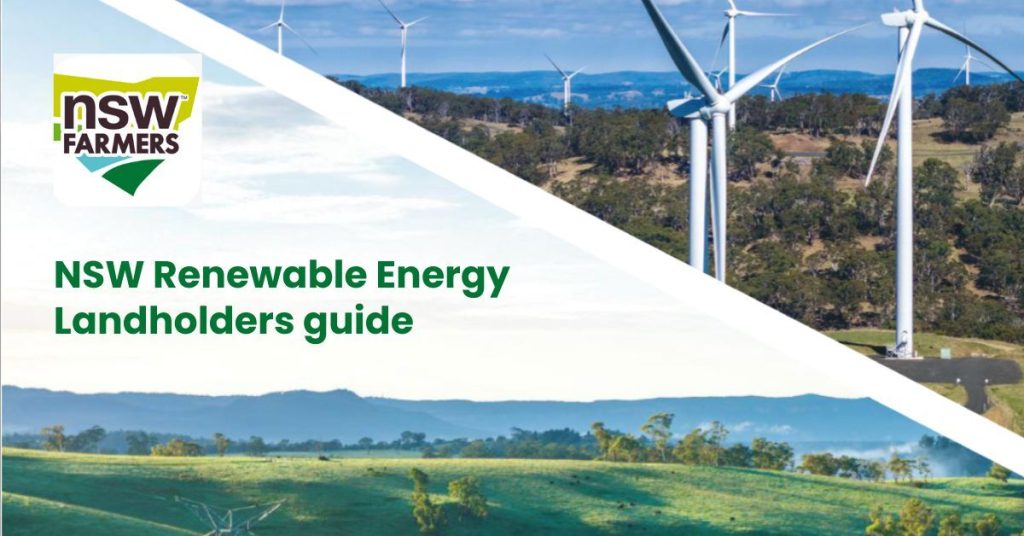Renewable Energy and Transmission Landholder Guide (NSW)
The Renewable Energy Landscape in NSW
The NSW Renewable Energy and Transmission Landholder Guide provides Australian farmers with comprehensive insights into navigating the rapidly evolving energy transition landscape. As renewable energy projects and transmission infrastructure expand across rural and regional NSW, farmers face both significant opportunities and challenges. This guide equips landholders with critical knowledge about their rights, responsibilities, and practical considerations when engaging with renewable energy developers and government agencies.
Key findings highlight the importance of thorough preparation before negotiations, including understanding land use, farm operations, and potential impacts on agricultural productivity. The guide emphasizes the value of obtaining professional legal, financial, and tax advice to make informed decisions about hosting renewable energy infrastructure. It also underscores the need to consider biosecurity, environmental sensitivities, and farm succession plans to safeguard long-term farming viability.
Landholder Engagement and Rights
One of the most critical aspects of this transition is the engagement with landholders. The guide emphasizes that while transmission projects are often deemed State Significant Infrastructure, landholders are not powerless. They have the right to:
- Seek comprehensive information about project plans
- Negotiate terms of land use
- Understand compensation mechanisms
- Protect their agricultural operations
Importantly, the decision to host renewable energy infrastructure is voluntary for solar, wind, and battery projects. However, transmission line easements can be compulsorily acquired if an agreement cannot be reached.

Financial and Strategic Considerations
For farmers considering hosting renewable energy infrastructure, the financial implications are multifaceted:
Income Diversification
- Renewable energy leases can provide a stable, long-term income stream
- Payments are typically structured as annual fees per turbine, solar panel, or hectare
- The Strategic Benefit Payment Scheme offers $200,000 per kilometer of transmission, paid annually over 20 years
Tax and Legal Implications
Landholders must carefully consider:
- Potential changes in land tax status
- Impact on primary production income
- Capital gains tax considerations
- Insurance and liability protections
Biosecurity and Community Impact
The guide highlights the critical importance of biosecurity management during project development. Recommended protocols include:
- Controlled access routes
- Hand washing and foot bath facilities
- Minimizing vehicle and personnel contact with production areas
- Comprehensive logging of site entries
- Establishing clear liability for biosecurity breaches
Community engagement is equally crucial. Developers are encouraged to:
- Provide transparent communication
- Offer community benefit-sharing programs
- Prioritize local employment and business opportunities
- Mitigate potential negative impacts on rural communities
Emerging Opportunities: Agrivoltaics
An innovative approach gaining traction is agrivoltaics – the co-location of agricultural production with solar energy developments. This strategy allows farmers to:
- Maintain agricultural productivity
- Generate renewable energy
- Benefit from shade and water conservation
- Diversify land use income
Negotiation Strategies
Successful engagement with renewable energy developers requires:
- Thorough preparation of property information
- Understanding of project development stages
- Clear communication of expectations
- Willingness to collaborate
- Professional legal and financial advice
Recommendations for NSW Agricultural Sector
- Proactive Preparation
- Develop comprehensive property plans
- Understand your land’s renewable energy potential
- Stay informed about local and regional energy developments
- Professional Support
- Engage legal experts specializing in renewable energy contracts
- Consult financial advisors to model long-term economic impacts
- Consider group negotiations with neighboring landholders
- Holistic Assessment
- Evaluate projects beyond immediate financial returns
- Consider long-term land use and succession planning
- Assess environmental and community impacts
The NSW renewable energy transition present landholders with both threats as well as opportunities with potential strategic partnerships that can provide economic resilience, environmental stewardship, as well as community benefit.
